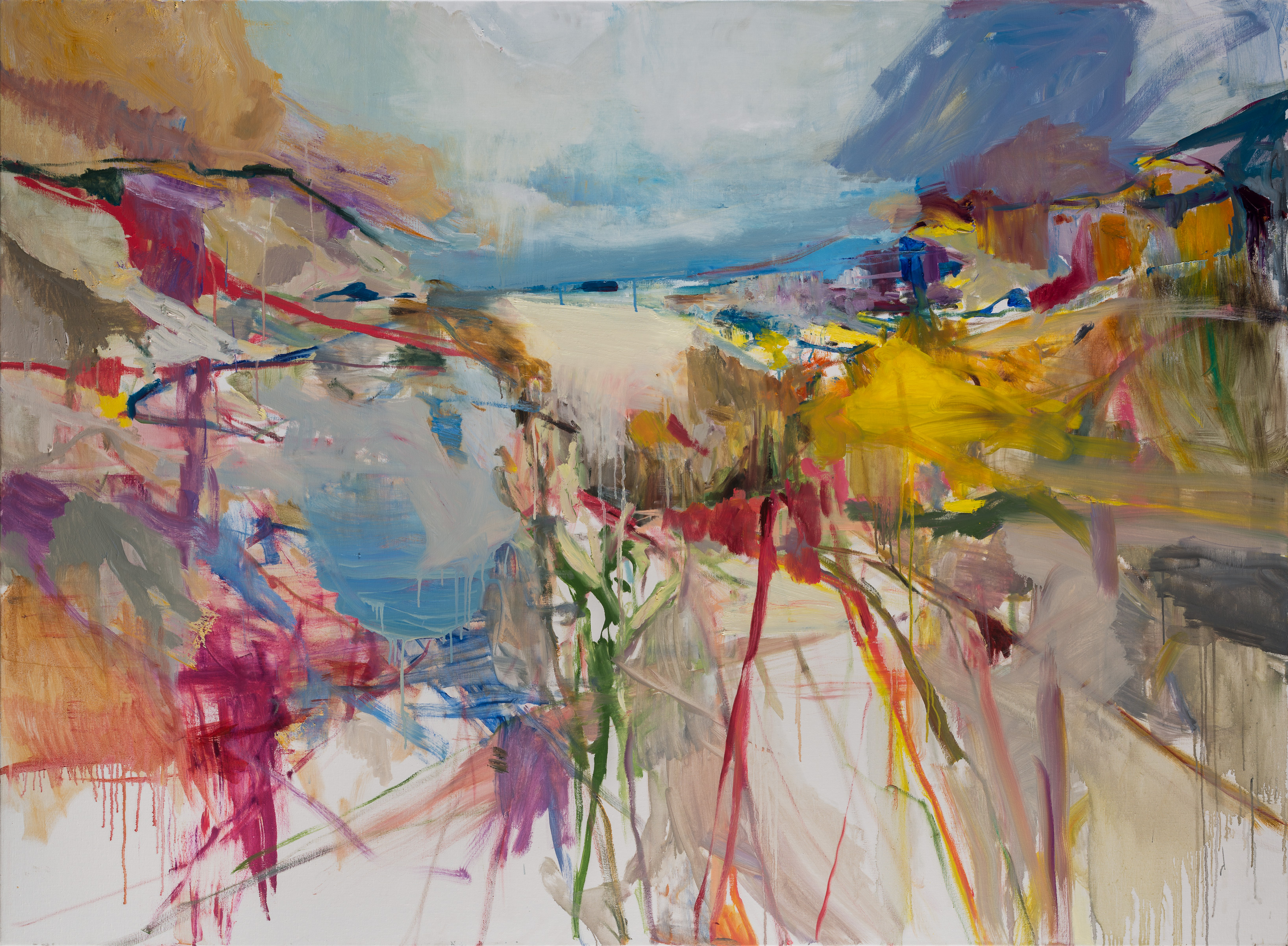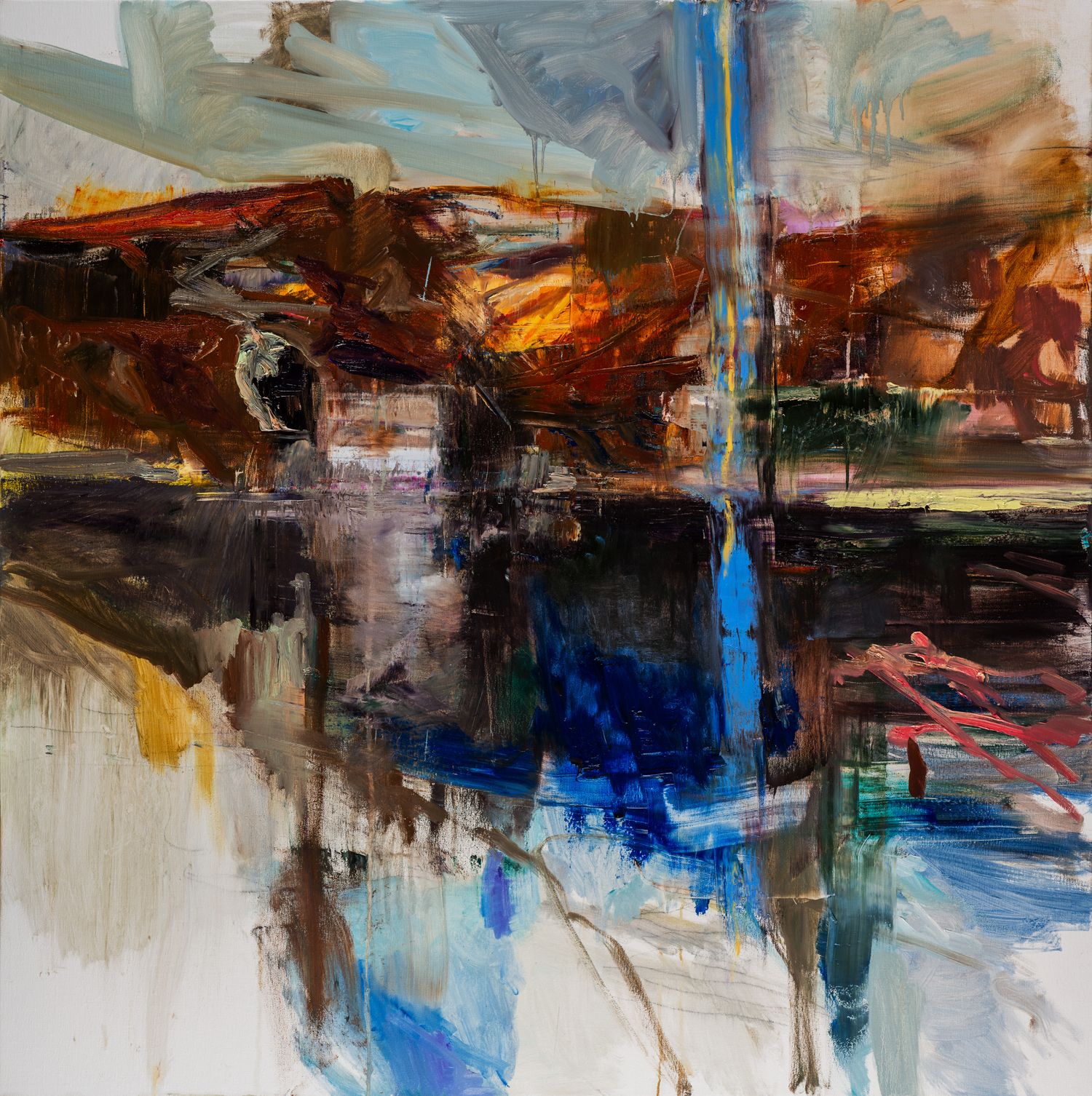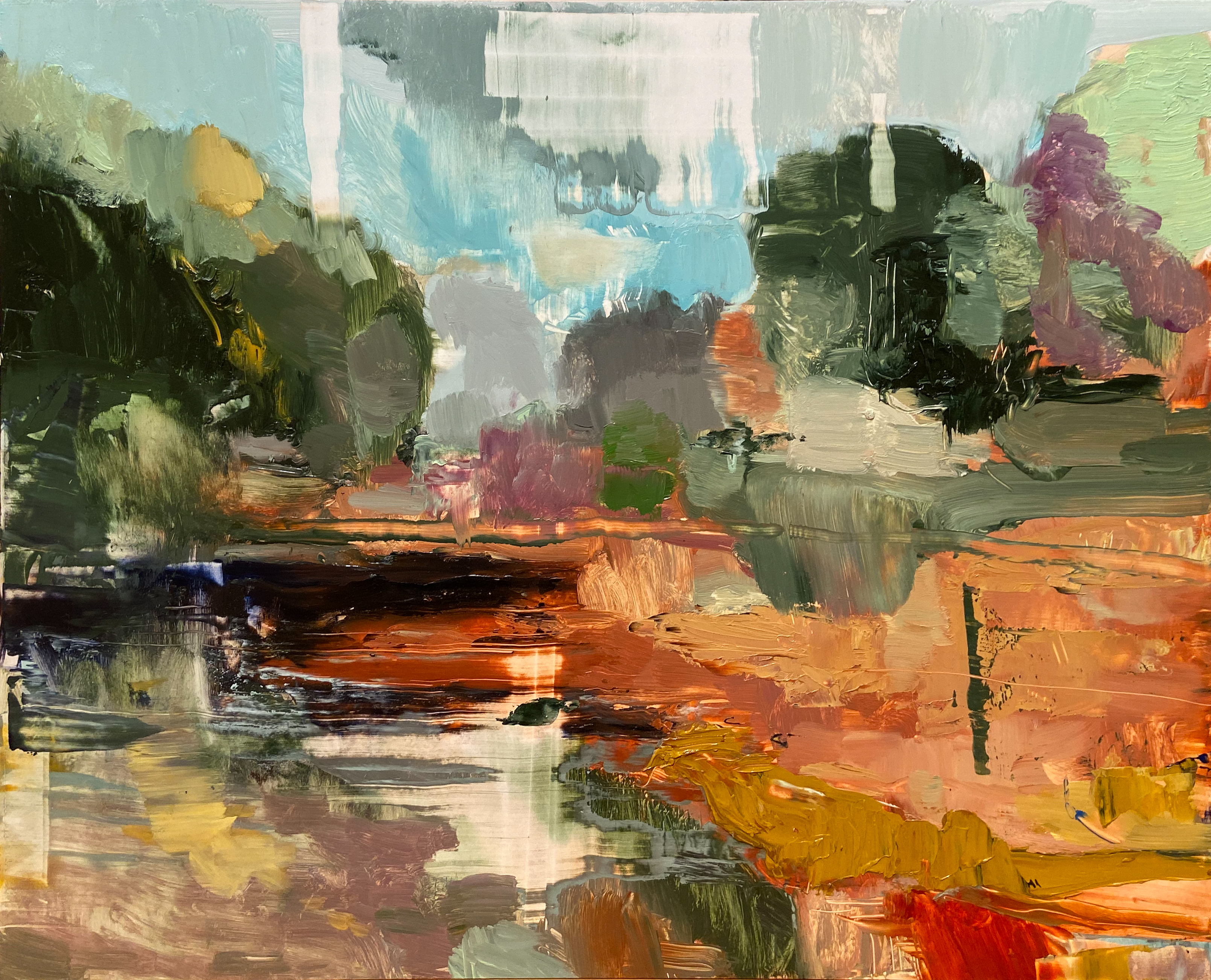by Matt Gonzalez
Fragmentary qualities in Fouvry’s landscapes, overlaid with heavily worked areas, give the impression of erasure and correction. She seems to be compressing together disparate landscape subjects, playing with focal points and in other cases simply enjoying the collision of imagined worlds.

Equilibrium and chaos pertain to a set of distinct rules, which Fouvry melds together, as if discovering a spoken language resulting from an amalgam of sundry dialects. Line and color are her building blocks, with a dash of texture. Fouvry explores the repetition of aesthetic patterns and structures; she is also working parallel in formation of interior space and sensation, posing a question of how breaking the expectation a viewer has can achieve a stronger composition. Her inquiry: why the interrupted line is necessary to resolutely attain form.
The unexpected answer materializes in the paintings; that perhaps the most stable visual engineering can be built on fragile and halting beams; even if the ensuing vulnerability can collapse at any moment. But, can it really? Visually speaking, the variability of architectural supports, with drawing and correction, may be what makes it durable. Though it would fail structurally if it were a three-dimensional building, the architecture of visual composition allows for endless possibility. This is most evident in L'arrivée à Locmaria, 2020 (oil on canvas, 59 x 78 inches).
Edwige Fouvry | L'arrivée à Locmaria, 2020 | Oil on canvas | 59 x 78 inches
Fouvry is engaged in a process of examining the order of things as Michel Foucault did with the human sciences (The Order of Things: An Archaeology of the Human Sciences (1966)). He noted that there are underlying epistemological assumptions corresponding to each historical age. Understanding them lets you understand why certain ideas gained prominence, or why others could not even be perceived. These favored epistemes anchor an era’s knowledge and understanding, thus defining what we hitherto ascribed to being navigated objectively.
Fouvry does the same with painting. She is stripping away the assumptions of painting, and looking at how overlaying a picture with erasure and blurriness, and a seemingly indecisive line, might actually better approximate reality. She reveals that what is necessary to make a successful painting has shifted during these epochs because expectations of what painting is cannot remain constant.
Edqige Fouvry | L'éclair lac, 2020 | Oil on canvas | 59 x 59 inches
Fouvry is positing a new episteme that halting lines and a confluence of erasure and blurriness more accurately convey the visual world because the resulting emotional and psychological elements welcomed into the landscape enhance the visual experience. Pure realism may not be the best descriptor for truth because our world is not constrained by only a single form of sensory perception; in painting, ordinarily evinced as the visual. Fouvry is interested in how paintings are made, and as a result, how inspiration, memory, personal cues and experience, smell, and touch all manifest themselves in the process.
Edwige Fouvry | Boueux, 2019 | Oil on panel | 16 x 20 inches
Paul Cezanne is a progenitor (Fouvry’s Petit Lac Rose 2 and Boueux come to mind) but Fouvry is not making cubism. Both painters use a variety of color to create a patchwork of complex planes, but Fouvry is looser in her ultimate compositions, seemingly aware that heightened definition of line need not result from intention. She utilizes drips of paint to connote the passage of time. Color choice and the reverberation of hues is what makes us feel as if the skeletal components are complete and fully drawn out. Landscapes are both sketchy and dense with vegetation and trees, and bodies of standing water lurking about. Much is suggested, Fouvry invites us to fill in the gaps.
Edwige Fouvry | Julien, 2019 | Oil on wood panel | 12 x 12 inches
In her portraits, Fouvry seeks an emotional rendering as much as anything akin to truth; her approach excavates psychological underpinnings. The resulting interior visage conveys more than simulacrum, as in Jean, or Julien, leaving the viewer space to augment with their own imagination. Nearly all of the portraits exhibited have actual names as titles, including Isabelle, Marc, and Cyrille assis, (assis = sitting), suggesting that they are intended to be likenesses. Herein, Fouvry exposes a balance between conventional exactness and emotion allowing the viewer to imbue the pictures with their expectation of resemblance.
Repeatedly, in paintings such as Ciel et terre and Grande vague et rochers, Fouvry employs the use of bare canvas, the natural white of the cloth backing, as if it is negative space. She adroitly leaves areas untouched, allowing the viewer to catch his or her breath from the obfuscatory elements in the composition.
Edwige Fouvry | Grande vague et rochers, 2020 | Oil on canvas | 75 x 75 inches
The hesitant and uneasy colorful lines belie her talent and purposefulness, echoing naive qualities that make parts of the work appear easy to render, as if she is just mark making. Yet these are the tools adapted on a quest to find order and structure in chaos. Fouvry may have found it on the edge, between representation and abstraction; or, perhaps more specifically in the space between those often competing concepts and unrestrained emotion and memory. In the process, Fouvry upends the assumptions we have made about painting.
Edwige Fouvry was born in Nantes, France, in 1970, and lives in Brussels, Belgium. She received her Master’s degree from École Nationale Supérieure des Arts Visuels de la Cambre in Brussels in 1996. She has exhibited at Dolby Chadwick Gallery gallery since 2014.





